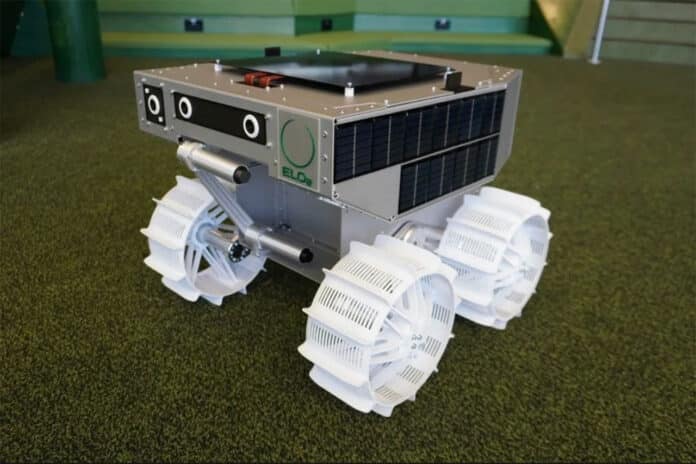Australian consortium ELO2 has unveiled a prototype of the rover, which it hopes will be Australia’s first to travel on the lunar surface. The design features a ‘scoop’ that will collect lunar regolith, which will be processed into oxygen to support NASA astronauts.
The consortium is working on the project under the Australian Space Agency’s (ASA) $50 million Moon to Mars Trailblazer program. ELO2 is competing against AROSE to provide the device to NASA for its Moon to Mars mission, and both were given $4 million each by the ASA earlier this year to create a prototype.
In 2021, the ASA and NASA agreed to include an Australian-made, semi-autonomous rover in a future Moon mission. The rover, if selected for the NASA Artemis mission later this decade, will be responsible for collecting and transporting lunar regolith (broken moon rock and dust) to a NASA-operated in-situ resource utilization (ISRU) system on a commercial lunar lander for oxygen extraction.
The soil contains oxygen in the form of chemical compounds with elements like iron and silicon. The technology demonstration is being done on a small scale, but it could help design larger and more capable units in the future. Such units could enable astronauts to use resources on the Moon to create rocket fuel and other mission consumables.
ELO2, a consortium led by EPE Trusted to Protect and Lunar Outpost Oceania with 14 partners, is currently testing chassis and suspension subsystems with the prototype rover, featuring an early design of a collection device and special wheels that will enable the rover to cross the moon’s challenging terrain.
The consortium is one of two chosen by NASA to develop early-stage design concepts for the lunar rover. BHP, Northrop Grumman Australia, RMIT University’s Space Industry Hub, and the University of Melbourne’s Space Laboratory are some of the other members of the consortium.
ELO2 will design and build the Trailblazer rover in Australia, leveraging the experience and lessons learned from the development of the Lunar Outpost MAPP Rover. Lunar Outpost’s South Pole M1-MAPP lunar rover is particularly noteworthy for its extensive capabilities for lunar surface operations and has been used to traverse over 2 kilometers at an average speed of 1.7 cm/s, with a maximum speed of 10 cm/s.
The prototype heavily depends on innovative 3D printing techniques, specifically leveraging Titomic’s expertise in metal additive manufacturing. The company uses its groundbreaking Cold Spray process called Titomic’s Kinetic Fusion Additive Manufacturing, which allows for on-demand coatings or repairs and is well-suited for aerospace, automotive, defense, and mining applications.
Lunar Outpost has also performed integration compliance checks with all the CLPS lander providers, allowing for greater flexibility and rapid integration with the as-yet unselected Trailblazer lander. This experience and heritage should help de-risk key rover technologies for the Australian Space Agency, providing a solid baseline for the design of the new rover.
Lunar Outpost is concurrently engaged in a second mission, supported by NASA’s PRISM program, to the equatorial Reiner Gamma lunar region in 2024. It is anticipated that ELO2’s rover could fly to the Moon as early as 2026.
